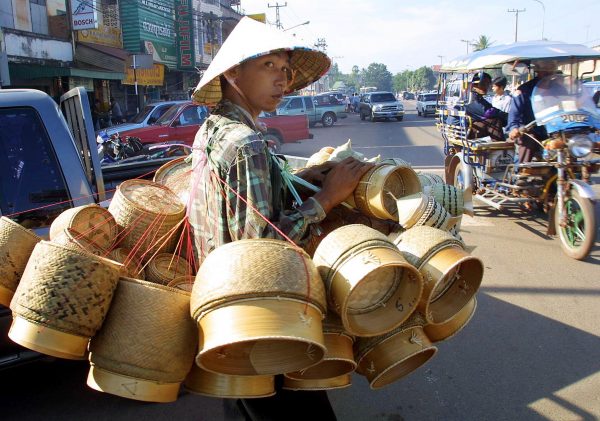But inequality has also increased within many developing countries, such as Laos. This trend threatens social and political stability and must be understood.
Since the early 1990s, five rounds of the Lao Expenditure and Consumption Surveys (LECS) have shown that measured inequality has increased at the national level — within both rural and urban areas, within almost all provinces of Laos and within each of the four major ethnic groups of the Lao population. The estimated Gini coefficient of expenditure inequality has risen from 0.311 to 0.364 at the national level.
At the same time, the estimated incidence of absolute poverty has halved, from 46 per cent of the population to 23 per cent. Put together, these facts mean that the poor of Laos have become better off in real terms, but that the rich have benefited more in both proportionate and absolute terms.
Despite rising inequality in household expenditures, access to publicly provided services (primary education, lower secondary education, access to health care and household access to the electricity network) has become more equal. Disparities in participation rates between richer and poorer groups have diminished.
Still, this increase in inequality is important as it undermines poverty reduction. If the real expenditures of all household groups had hypothetically increased at the same rate (meaning that inequality had remained unchanged at its 1992–93 level), absolute poverty incidence would have declined from 46 per cent to 17 per cent. That is, increased inequality reduced the amount of poverty reduction that occurred over the last two decades by around 6 per cent of the population, compared with what would have hypothetically occurred if inequality had not risen. When the data are decomposed into rural and urban areas of residence or by province, or by the ethnicity of the household head, the increase in inequality within groups dominates any changes between groups: inequality has increased throughout the country.
Laos’ experience raises several important questions about the nature of national inequality that remain unanswered by the LECS. First, to what extent is rising inequality in private consumption mitigated by a more equal distribution of publicly-provided services? Second, what economic or other forces have driven the increase in private expenditure inequality?
More fundamentally, should Laos necessarily be concerned about inequality? Surely, in low-income countries the priority must be the reduction of absolute poverty. But as the case of Laos suggests, there is ample reason to think that inequality, as well as the rate of economic growth, can be important for poverty reduction. An increase in inequality raises the level of poverty incidence given the level of national income. There is also evidence that a high initial level of inequality reduces the amount by which poverty incidence declines for a given rate of growth.
The extent to which inequality is bad for poor countries presumably depends on whether it is transitory or persistent. If it persists, in that inequality begets more inequality, it could increase social tensions and disrupt peace and order. This will harm growth and undermine further attempts at reducing poverty. Rising inequality in countries where a large proportion of the population remains poor may indicate that a significant share of the labour force is either underemployed or unemployed, or at least not participating fully in the growth process. This could potentially put at risk the sustainability of the growth process itself.
If it is transitory, in the form posited by the famous Kuznets hypothesis, then its detrimental effects will be short-lived. Whether rising inequality is likely to be persistent or transitory depends on a number of factors, not least the underlying causes of the high or rising inequality, as well as policy reactions to this. The linkages between poverty reduction, inequality and growth are complex and subject to continuing controversy.
Whether the increase in expenditure inequality is a serious public policy problem for Laos is debatable. Some increases in inequality may be inevitable in a poor country undertaking a wide-reaching program of economic reform, as in Laos over the past two decades. What is not controversial is that for social, economic and political reasons, economic inequality needs to be monitored and understood.
Professor Peter Warr is former head of the Arndt-Corden Department of Economics and director of the Poverty Research Centre at the Crawford School of Public Policy, The Australian National University.
Sitthiroth Rasphone is a Research Fellow at the National Economic Research Institute (NERI) in Vientiane, Laos.
Jayant Menon is a lead economist at the Economic Research and Regional Cooperation Department, Asian Development Bank (ADB) and an adjunct fellow at the Arndt-Corden Department of Economics, The Australian National University.
This article is based on a longer paper that is available here.

